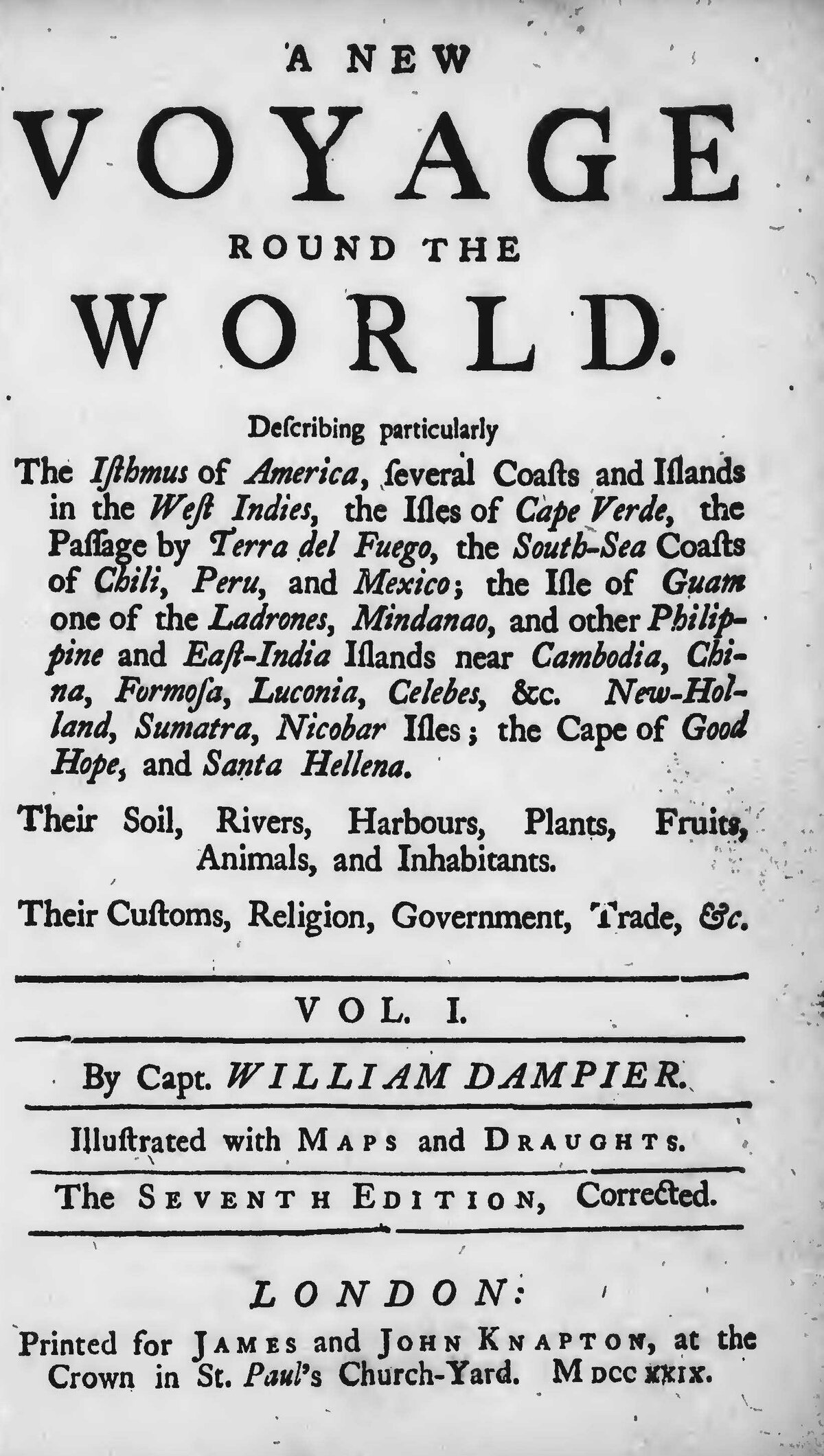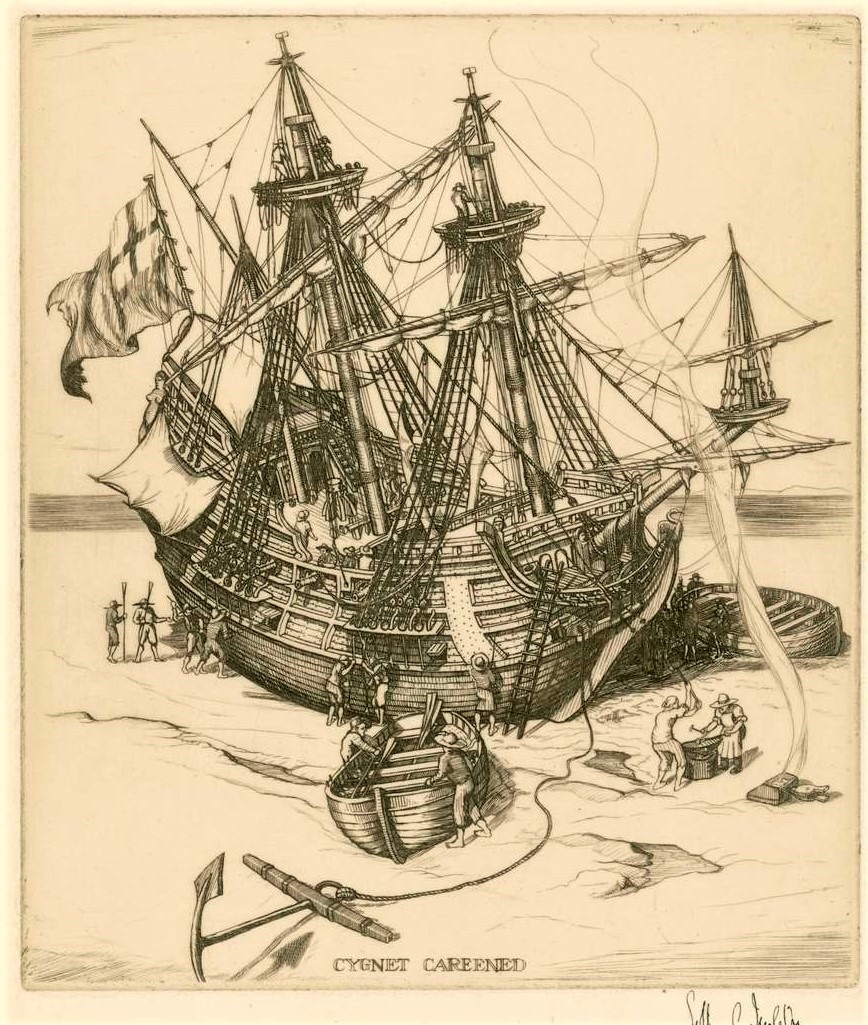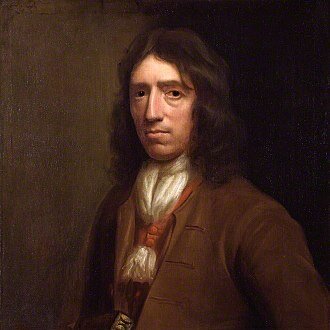A New Voyage Round The World
by William Dampier
Adventurer and gifted explorer William Dampier's view on early Southeast Asia

Type: on-demand books
Publisher: Part I and III of Voyages Around The World, J. & J. Knapton, 7 vols, London, 1729
Edition: 2nd edition | digital version: ADB ebook
Published: 1697
Author: William Dampier
Pages: 602
Language : English
ADB Library Catalog ID: eTRADAMP
A pirate at heart before he joined the Royal Navy (and even after), an avid explorer who ended up penniless even if he contributed important scientific (and commercial) discoveries, the author provides us great reading throughout his memoirs, far from the dry reports of Western officials.
His notations regarding Cambodia in the 17th century include:
- Local mores and women: “They are so free of their Women, that they
Would bring them aboard and offer them to us ; and many of our Men hired them for small Matter. This is a Custom used by several Nations in the East-Indies as at Pegu, Siam, Cochinchina and Cambodia, as I have been told. It is used at Tunquin [Tonkin] also to my Knowledge, for I did afterwards make a Voyage thither, and most of our Men had Women aboard all the time of our abode there.” (p. 395) - Geography: “The 23d Day we arrived at Pulo Ubi, or the Island Ubi [now Hon Khoai in South Vietnam, known for its peculiar squirrels and geckos]. This Island is about 40 Leagues to the westward of Pulo Condore. It lies just at the entrance of the Bay of Siam, at the S.W. point of Land that makes the Bay, namely, the Point of Cambodia. This Island is about seven or eight Leagues round, and it is higher Land than any of Pulo Condore Isles. Against the South-East part of it there is a small Key, about a Cables length from the main Island. This Puh Vbi is Very woody, and it has good Water on the North-side, where you may anchor but the best anchoring is on the Easl-side against a small Bay ; then you will have the little Island to the southward of you.” (p. 399)
- Cambodian rice: “At Pulo Ubi we found two small Barks laden with Rice. They belonged to Cambodia, from whence they came not above two or three Days before, and they touched here to fill Water. Rice is the general Food of all these Countries, tranfported by Sea from one Country to another, as Corn in these parts of the World. For in some Countries they produce more than enough for themselves, and send what they can spare to those Places where there is but little.” (ibid.)
- Regional trade: “These barks were laden with Rice and Laquer, which is used in Japanning of Cabineis. One of these barks came from Champa, bound to the Town of Malacca, which belongs to the Dutch, who took it from the Portugueze; and this shows that they have a Trade with Champa. This was a very pretty neat Vessel, her bottom very clean and curiously coated, she had about forty Men all armed with Cortans, or broad Swords, Lances, and some Guns, that went with a Swivel upon their Gunnal. They were of the Idolaters, Natives of Champa, and some of the brilghtest, moft sociable, without Fearfulness or Shyness, and the most neat and dextrous about their Shipping, of any such I have met with in all my Travels, The other Vessel came from the River of Cambodia, and was bound towards the Streights ot Malacca.’ (p 400) [Note that the lower part of the Mekong River is always referred to as ‘River of Cambodia’]
email hidden; JavaScript is required

The Cygnet (source: Sea Museum, Sydney, Australia)
Tags: English explorers, early Cambodia, Cochinchina, Champa, Java, maritime trade, Mekong River, women
About the Author

William Dampier
William Dampier (baptised 5 September 1651, East Coker (England) — March 1715, London) was an English explorer, buccaneer, privateer, navigator, and naturalist who became the first Englishman to explore parts of what is today Australia, and the first sailor to circumnavigate the world three times.
Both a ruthless adventurer and a keen observer of the nature and culture of newfound lands, he introduced Europe to new horizons and even words, being one of the first authors to using terms such as avocado, barbecue, and chopsticks.
Aboard the Cygnet buccaneer ship, he landed and described Southeast Asian coasts, figthing the Spaniards in numerous encounters. Circa 1687, the crew seized the ship from its captain during a mutiny in the Philippines and sailed to China and what was then called New Holland (Australia) with Dampierre onboard.
After his book A New Voyage Round the World raised great interest in 1697, Dampier was given command of a Royal Navy ship, the HMS Roebuck, and made important discoveries in Western Australia, before being court-martialled for cruelty.
On a later voyage he rescued Alexander Selkirk, a former crewmate who may have inspired Daniel Defoe’s Robinson Crusoe. Others influenced by Dampier include James Cook, Horatio Nelson, Charles Darwin, and Alfred Russel Wallace.
